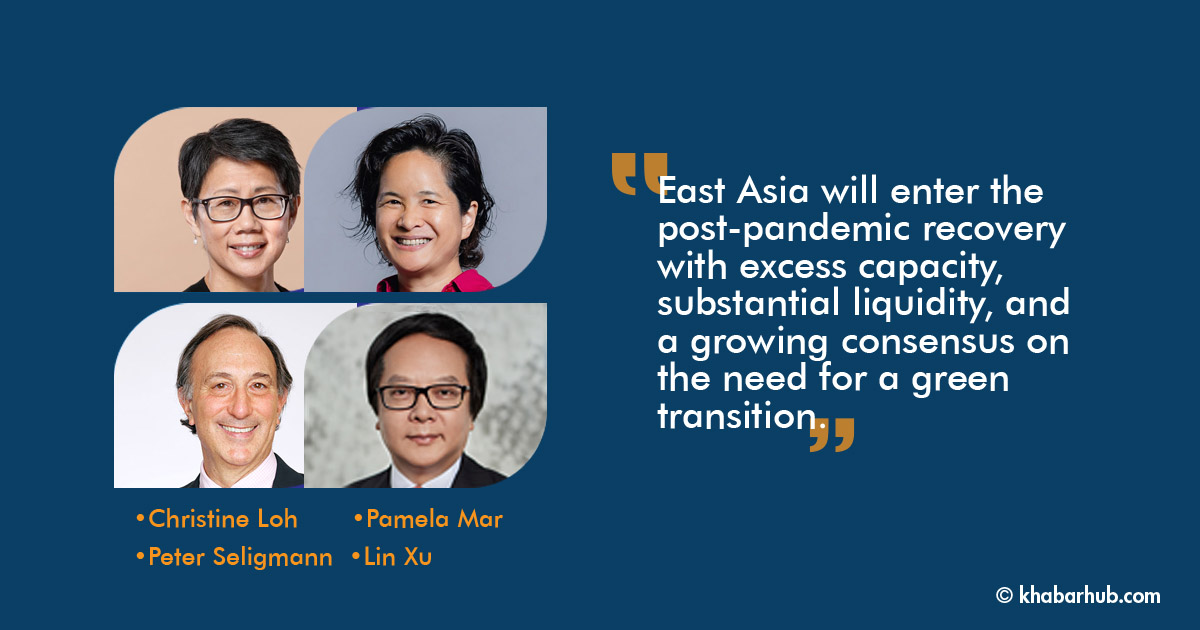Optimism is in the air in Asia, where the new Regional Comprehensive Economic Partnership has brightened prospects for a post-pandemic recovery and a revival of multilateralism.
Even more promising, there is growing regional agreement on the need to address climate change.
China’s recent announcement that it will aim for carbon neutrality by 2060 – which was followed by commitments from Japan, South Korea, and Hong Kong to achieve net-zero emissions by 2050 – shows that East Asia is serious about the issue.
But truly making a difference will require reconsidering the traditional Asian development model, which has long tolerated environmental degradation in the interest of maximizing growth.
While China’s commitment to carbon neutrality by 2060 is a good start, electricity demand is already forecast to double by 2050 (from 2017 levels).
It therefore must urgently step up its efforts to improve energy efficiency, adopt green and low-carbon energy, expand energy storage, deploy carbon capture and sequestration technologies, and develop a framework for low-carbon urbanization.
The pandemic has shown us that we must rethink our relationship with nature and the environment, allowing for more bottom-up solutions that will empower communities.
Many of the needed technologies are already available, and East Asia has the scale to bring down their cost to a level that would enable widespread adoption.
Moreover, at a time of high liquidity (from central banks) and excess capacity, there is no shortage of funding for an Asian low-carbon transition.
The real question is how best to channel existing resources to the right projects. The role of sustainable finance must be expanded substantially.
East Asian corporations are already issuing more green bonds than in the past, in order to align with new policy frameworks (such as in Hong Kong). But there are at least three ways to scale up these efforts even more.
First, policymakers and others with influence over industry standards need to make it easier for companies large and small to present their green credentials to investors.
The global shift toward unified carbon reporting is a good start, but it applies mainly to large multinationals with the necessary capacity.
Disclosure guidelines that work for big and small enterprises alike are still needed. Here, the Hong Kong Exchanges’ Sustainable and Green Exchange (STAGE) is a step in the right direction.
Second, ordinary investors must be able to understand and access financial vehicles geared toward the low-carbon economy. Creating a region-wide market for green funds, initiatives, and companies would help, bringing many more financial-market participants into the mix.
Third, Asia needs to diversify the financing for its low-carbon future, tapping both debt and equity markets, and providing a platform to connect potential funders with companies and projects that meet environmental, social, and governance criteria.
But it is important to remember that technology alone will not overcome the challenge of climate change. We also need to recognize the far-reaching potential value of nature-based solutions.
Achieving carbon neutrality in 30-40 years implies that Asian societies will undergo a far-reaching scientific, economic, financial, technological, and environmental transformation.
Standing forests, healthy soils, mangroves, salt marshes, oceans, coral reefs, and other ecological systems all play a role in sequestering atmospheric carbon dioxide.
In fact, one-third of the global CO2-mitigation challenge could be met simply by protecting healthy ecosystems and supporting reforestation.
Moreover, protecting ecosystems and pursuing reforestation are an ideal way to create jobs locally, providing opportunities for those displaced by the transition away from fossil fuels.
The pandemic has shown us that we must rethink our relationship with nature and the environment, allowing for more bottom-up solutions that will empower communities.
At the global level, while US President-elect Joe Biden’s administration will revive America’s climate commitments, international climate action could suffer if Sino-American relations do not improve.
In the meantime, it will help to double down on private-sector and civil-society efforts like the China-United States Exchange Foundation and the US-China Green Fund, as these will facilitate more coordinated action.
More broadly, it is time to take a hard look at the current state of climate collaboration. Green innovation is flourishing in many places, yet without a broader exchange of data and ideas, too many grassroots projects will never take off.
A good analogy is to open-source programming. With open digital platforms to facilitate collaboration among non-governmental organizations, businesses, and governments, innovations to address climate change can be treated as global public goods, and made available for rapid adoption to match supply with demand.
What do we need to stop doing within the next three years to salvage the capital that will be left in stranded assets, and how can we ensure that vested interests do not block change?
Achieving carbon neutrality in 30-40 years implies that Asian societies will undergo a far-reaching scientific, economic, financial, technological, and environmental transformation.
No citizen will be spared from the effects, so all must be involved. Public commitments by governments are not enough.
The challenge now is to envision what a net-zero trajectory actually means for the next 3-5 years, so that we can start tracking our progress.
Which policy measures are most urgent? How should we sequence our investments to yield the largest multiplier effect?
What do we need to stop doing within the next three years to salvage the capital that will be left in stranded assets, and how can we ensure that vested interests do not block change?
Some of these issues will be easier to resolve than others. We must continue to build infrastructure and transportation systems to support low-carbon outcomes, retrofit buildings for energy efficiency and improved indoor health, and set rules for green construction and urbanization. And we must start now.
(Christine Loh is Chief Development Strategist at the Hong Kong University of Science and Technology; Pamela Mar is Executive Vice President for Knowledge and Applications at the Fung Academy; Peter Seligmann is CEO of Nia Tero; and Lin Xu is Chairman of the US-China Green Fund)
Copyright: Project Syndicate









Comment